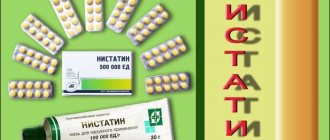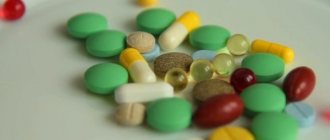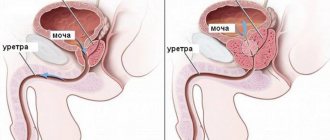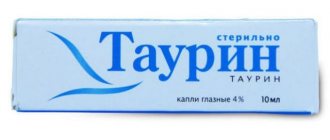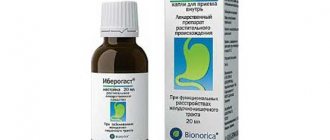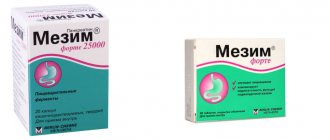Formidron is an antiseptic, deodorant that has an antifungal and disinfectant effect, deodorizes and cools the surface.
The main active ingredient is Formaldehyde, which is part of the drug, capable of destroying and folding the structures of protein molecules. That is why Formidron has a negative effect on microorganisms that parasitize the skin. Pathogenic bacteria disrupt the functioning of the sebaceous glands, resulting in a repulsive odor of sweat.
Formidron has tanning properties that contribute to clogging of the sebaceous gland ducts and their complete atrophy.
Composition and release form
The release form of Formidron is an alcohol solution for external use: transparent, colorless, with an aromatic odor (50 or 100 ml in bottles made of imported brown glass, or orange glass, or polyethylene terephthalate, sealed with polyethylene stoppers or caps with first opening control, each bottle in a cardboard box along with instructions for use). For hospitals, the drug is available in polyethylene canisters of 3, 5 and 10 liters.
Solution composition:
- active substance: formaldehyde (formaldehyde solution 37%);
- auxiliary components: ethyl alcohol (ethanol) 95%, purified water, cologne.
Description of the drug
The main active component of Formidron is formaldehyde. An aqueous solution of this substance is known to many under the name “Formalin”. Formaldehyde negatively affects the condition of fungal cells, which leads to the cessation of ergosterol production by the pathogen and the death of the infection. At the same time, the resistance of the epidermis to bacteria, some types of viruses and microbes increases.
Important! Formaldehyde is a toxic substance that can be fatal if ingested. Therefore, drinking even a weak solution is prohibited! 50-60 ml of the drug taken orally leads to death in 98% of cases.
The main indications for the use of Formidron in dermatology:
- nail fungus at an early stage of development,
- diaper rash,
- excessive sweating,
- unpleasant foot odor,
- various fungal infections of the skin of the feet.
Together with “heavy” antimycotic agents for external and internal use, Formidon is able to cope with the advanced form of atrophic onychomycosis. In the case of this disease, not only the keratin layer is affected, but also soft tissues and even blood vessels.
The solution is also suitable for carrying out preventive measures to prevent recurrence of fungal infection after completion of therapy. It can also be used to treat the patient’s shoes and surfaces with which he came into contact.
Pharmacological effect
The drug has an antiseptic and deodorizing effect. The active component in the form of formaldehyde, which is part of the drug, has the ability to coagulate, that is, fold or destroy the structure of protein molecules. Due to this property of the active substance, Formidron has a detrimental effect on bacteria living on the skin.
Formidron also has a tanning effect, which ensures the closure of the sweat gland ducts and their atrophy.
Contraindications and side effects of Formidron
Formidron is not suitable for people with high sensitivity to the active component of the solution, inflammation of the skin of the feet not caused by pathogenic microflora, and children under 12 years of age. During pregnancy and during breastfeeding, a preliminary consultation with a physician is necessary.
Important! Due to the fact that formaldehyde is a toxic substance, you should not treat the skin of the feet where there are open wounds or ulcers of unknown origin. Through damaged skin, the antiseptic component enters the bloodstream and leads to poisoning.
Using Formidron in the treatment of foot fungus, patients sometimes encounter side effects of the drug:
- skin redness,
- swelling of fingers,
- cracking of the nail plate, change in its color,
- increased itching of the feet,
- rash.
These phenomena are symptoms of an allergy to the solution. In this case, you must immediately stop therapy and consult a doctor. Also, if you are severely intolerant to formaldehyde, you may need to take antihistamines, which will be prescribed by your doctor.
Contraindications
The use of Formidron solution is excluded in certain conditions, which include:
- Individual intolerance to formaldehyde or alcohol.
- Acute inflammatory process on the skin in the area of intended use of this drug.
- The person is under 14 years of age.
It is not recommended to apply the medication to areas of the body with thin, delicate skin, as this can lead to the development of irritation. Before starting to use Formidron solution, it is important to ensure that there are no contraindications.
Dosage and method of administration
As indicated in the instructions for use, Formidron solution is used externally; it is recommended to wipe the interdigital folds of the feet with a small amount of liquid once a day.
After a hygienic shower and drying, the drug is applied to areas of the skin with excessive sweating (soles, palms, interdigital folds) for 30-40 minutes. Then the drug is washed off with warm water. On delicate sensitive skin (armpits and palms in women), the drug should be applied for no more than 20 minutes. After this, the skin should be thoroughly washed with warm water without detergents and powdered with talcum powder or baby powder.
After shaving the armpits, Formidron can be applied no earlier than one day later. One procedure is enough to reduce skin sweating for 7-12 days. In case of severe sweating, the procedure is carried out for 2-3 days in a row.
Analogs and prices in pharmacies
Formidron is a cheap antiseptic available to everyone. It does not require a prescription from a doctor and is sold at a price of 30 rubles per 50 ml. There are 100 ml bottles on sale, their cost does not exceed 85-90 rubles.
The following drugs are considered analogues of this drug:
- Dry-Dry,
- Galmanin,
- Chlorhexedine.
They contain other active ingredients, but also fight foot fungus. In addition, they can be diluted with water and used as a disinfectant for clothing, shoes and household surfaces.
Overdose
Symptoms of overdose are usually redness of the skin at the site of application, dryness, irritation and itching. You should stop using the product and wash it off the affected area with water.
Symptoms of poisoning when Formidron is ingested are acute pain in the stomach, dizziness, disorientation, causeless fear, nausea, and vomiting. If formalin gets into the gastrointestinal tract, you should immediately induce vomiting or, if more than half an hour has passed, perform gastric lavage through a tube. Prescribe diuretics, ammonia and urea preparations.
In case of poisoning with formaldehyde vapor, inhalation should be performed with a solution of ammonia (1-2 drops).
Security[ | ]
Fire safety[ | ]
Explosion hazard category IIB according to GOST R 51330.11-99, explosion hazard group T2 according to GOST R 51330.5-99. Concentration limits of ignition 7-73% vol.; Hazard class - II (highly hazardous substances)[15]; auto-ignition temperature - 435 °C[16].
Impact on the human body[ | ]
Maximum permissible concentrations (MPC) of formaldehyde:[17][18][19]
- MPCr.z. = 0.5 mg/m³
- MPCm.r. = 0.05 mg/m³
- MPCs.s. = 0.01 mg/m³
- MPCv. = 0.05 mg/l
On May 25, 2014, the Resolution of the Chief State Sanitary Doctor of the Russian Federation came into force, according to which the following MPCm.r values were established. = 0.05 mg/m³, MPCs.s. = 0.01 mg/m³. The maximum one-time MPC value for formaldehyde has been increased from 0.035 to 0.05 mg/cubic meter. m, the average daily MPC volume - from 0.003 to 0.01 mg/cubic. m. This substance was assigned the first hazard class (previously it was the second).[15][20]
The lethal dose of a 40% aqueous solution of formaldehyde (formalin) is 10-50 g.
Formaldehyde is toxic: ingestion of 60-90 ml is fatal. Symptoms of poisoning: pallor, loss of strength, unconsciousness, depression, difficulty breathing, headache, and often convulsions.
In case of acute inhalation poisoning: conjunctivitis, acute bronchitis, up to pulmonary edema. Signs of damage to the central nervous system gradually increase (dizziness, fear, unsteady gait, convulsions). In case of poisoning through the mouth: burn of the mucous membranes of the digestive tract (burning, pain in the throat, along the esophagus, in the stomach, vomiting of blood, diarrhea), hemorrhagic nephritis, anuria. Possible swelling of the larynx and reflex cessation of breathing.
Chronic poisoning in workers with technical formaldehyde is manifested by weight loss, dyspeptic symptoms, damage to the central nervous system (mental agitation, tremors, ataxia, visual disturbances, persistent headaches, poor sleep). Organic diseases of the nervous system (thalamic syndrome), sweating disorders, and temperature asymmetry are described. Cases of bronchial asthma have been reported.
Under conditions of exposure to formaldehyde vapors (for example, among workers engaged in the production of artificial resins), as well as in direct contact with formaldehyde or its solutions, severe dermatitis of the face, forearms and hands, nail damage (their fragility, softening). Dermatitis and eczema of an allergic nature are possible. After poisoning, sensitivity to formaldehyde increases. There is evidence of adverse effects on specific functions of the female body[21][22].
Formaldehyde is included in the list of carcinogenic substances GN 1.1.725-98 in the section “probably carcinogenic to humans”, while its carcinogenicity to animals has been proven.[23][24][25]
Environmental safety[ | ]
Formaldehyde is ubiquitous in the atmosphere, where it appears due to the combustion and decomposition (including photochemical) of organic substances and materials. At the same time, formaldehyde is constantly decomposed to carbon dioxide under the influence of sunlight and nitrogen oxides, and is also washed out of the air by rain and then processed by bacteria (for example, Escherichia coli
or
Pseudomonas fluorescens
). The main source of formaldehyde in the atmosphere is photochemical oxidation and incomplete combustion of hydrocarbons. Formaldehyde is part of exhaust gases and gas emissions from factories and waste incinerators[26].
In confined spaces, formaldehyde accumulates due to tobacco smoking, emissions from urea-formaldehyde and other resins, the presence of open fires and the use of disinfectants.[26].
The legislation of many countries regulates the maximum permissible concentration of formaldehyde in premises, as well as emissions from factories[26].
Reviews
We invite you to read reviews from people who have used Formidron:
- Marina. I bought this product at the pharmacy (they praised it so much and said that it was better than dry dry and not so harmful) - 20-30 minutes and washed it off with warm water and the next day there was sweat and the main thing was the smell too, and on day 2 I tried it again but no result No. although I used it for 2 days in a row. I also wiped my shoes, also the result was 0. that water or this product makes no difference and I no longer started using it since it contains formaldehyde and does not help. so it’s surprising how it helped you?
- Inna. I keep Formidron at home exclusively for effective antifungal treatment of shoes: I put on gloves, a respirator and construction glasses (it gives off very caustic fumes), I wipe each shoe from the inside with cotton pads soaked in a solution, I leave the discs there, tightly packing the shoes in a bag for two days, after which I'm ventilating. I read that the drug is not excreted from the body and is generally considered an analogue of Formalin. So I would not recommend applying it to the skin either for children, pregnant women, or just adults - there are a great many safe anti-sweat analogues.
- Kate. I bought this remedy for underarm sweating and it didn’t work for me at all. After application, redness appeared, itching, itching all the time there, in short, it’s better to let it smell later than for me to go through such torment. In addition, I now realized that this is a very harmful remedy and thank God that it didn’t work for me and I didn’t use it much, otherwise I could have died like that.
Chemical properties[ | ]
Due to the low electron density on the carbon atom, formaldehyde easily enters into various reactions. In terms of reactivity, it is superior to other aldehydes and aliphatic ketones.
Oxidation and reduction[ | ]
Formaldehyde is reduced by hydrogen to methanol in the presence of nickel, platinum, copper and other catalysts. It is oxidized to formic acid or CO2 and water with potassium permanganate, potassium dichromate and nitric acid. It also interacts with salts of many metals (silver, platinum, gold, bismuth, etc.), precipitating metals from solutions and oxidizing to formic acid [1]. When heated to 150 °C, formaldehyde decomposes to methanol and carbon dioxide, and above 350 °C - to hydrogen [10].
5 HCHO + 4 KM n O 4 + 6 H 2 SO 4 → 4 M n SO 4 + 2 K 2 SO 4 + 5 CO 2 + 11 H 2 O {\displaystyle {\mathsf {5HCHO+4KMnO_{4}+6H_ {2}SO_{4}\rightarrow 4MnSO_{4}+2K_{2}SO_{4}+5CO_{2}+11H_{2}O}}} HCHO + 2 C u ( OH ) 2 → HCOOH + C u 2 O + 2 H 2 O {\displaystyle {\mathsf {HCHO+2Cu(OH)_{2}\rightarrow HCOOH+Cu_{2}O+2H_{2}O}}} HCHO + 4 [ A g ( NH 3 ) 2 ] OH → ( NH 4 ) 2 CO 3 + 4 A g + 6 NH 3 + 2 H 2 O {\displaystyle {\mathsf {HCHO+4[Ag(NH_{3})_{2}]OH \rightarrow (NH_{4})_{2}CO_{3}+4Ag+6NH_{3}+2H_{2}O}}}
Addition reactions[ | ]
Formaldehyde undergoes nucleophilic addition reactions typical of aldehydes. When added to alcohols, it forms acetals, with hydrogen sulfide it gives tritiane, and with HCN in the presence of alkali - cyanohydrin [1]. With sodium hydrosulfite it gives a bisulfite derivative[1].
Butadiene is obtained from formaldehyde and acetylene using the Reppe reaction. In the presence of lime, formaldehyde is converted into carbohydrates, mainly hexoses. The addition of ammonia gives hexamethylenetetramine, and when using primary amines, trimeric derivatives of the corresponding Schiff bases are formed. Formaldehyde is also a key component of the Mannich reaction. It also produces derivatives with other nitrogenous nucleophiles: hydroxylamine, hydrazines and semicarbazide. In this case, oxime, hydrazones and semicarbazone are formed, respectively[1][10].
In aqueous solutions, formaldehyde easily adds water and is 99.9% in a hydrated form, which is unstable in its free form [1].
Condensation reactions[ | ]
Formaldehyde undergoes aldol condensation and similar transformations. In the presence of concentrated alkali, it gives the Cannizzaro reaction, turning into methanol and a salt of formic acid, and with other aldehydes it gives a Cannizzaro cross reaction, acting as a reducing agent and turning into a salt of formic acid. With acetaldehyde in the presence of calcium hydroxide it forms pentaerythritol, and in the gas phase at 285 ° C - acrolein. Formaldehyde also reacts with Tishchenko to form methyl formate [1] [10].
Polymerization reactions[ | ]
Anhydrous formaldehyde readily polymerizes and is therefore not commercially available. Polymerization is catalyzed by polar impurities: acids, alkalis, water, etc. In aqueous solutions, formaldehyde is also prone to polymerization, so methanol and other stabilizers are added to commercial batches[10]. When aqueous solutions are evaporated, paraform is formed[1].
In an alkaline environment, formaldehyde reacts with urea to produce monomethylol and dimethylol derivatives, which condense to form urea-formaldehyde resin. It reacts similarly with melamine to form melamine-formaldehyde resins. In the presence of acids and bases, formaldehyde reacts with phenol to produce phenol-formaldehyde resins[1].

